AUSTRALIAN DH.82 TIGER MOTHS - 1960s
The
first Tiger Moths were introduced by Australian flying clubs in 1936,
and when the type was selected by RAAF as the standard
basic trainer, many more British built DH.82s followed. In 1940 de Havilland Aircraft Pty Ltd at Mascot Aerodrome, Sydney commenced local production, constructing a total of 1,070 Australian-built Tiger Moths for RAAF and overseas customers.
From 1946 military disposals Tigers became the mainstay of Australian private and club flying for over the next decade. Their low cost and plentiful spares saw their extensive use for aerial agriculture, with a high attrition rate. The retired DH.82 cropsprayers in the 1960s provided the basis of the boom in rebuilding Tiger Moths to immaculate original condition by antique aircraft enthusiasts.
basic trainer, many more British built DH.82s followed. In 1940 de Havilland Aircraft Pty Ltd at Mascot Aerodrome, Sydney commenced local production, constructing a total of 1,070 Australian-built Tiger Moths for RAAF and overseas customers.
From 1946 military disposals Tigers became the mainstay of Australian private and club flying for over the next decade. Their low cost and plentiful spares saw their extensive use for aerial agriculture, with a high attrition rate. The retired DH.82 cropsprayers in the 1960s provided the basis of the boom in rebuilding Tiger Moths to immaculate original condition by antique aircraft enthusiasts.
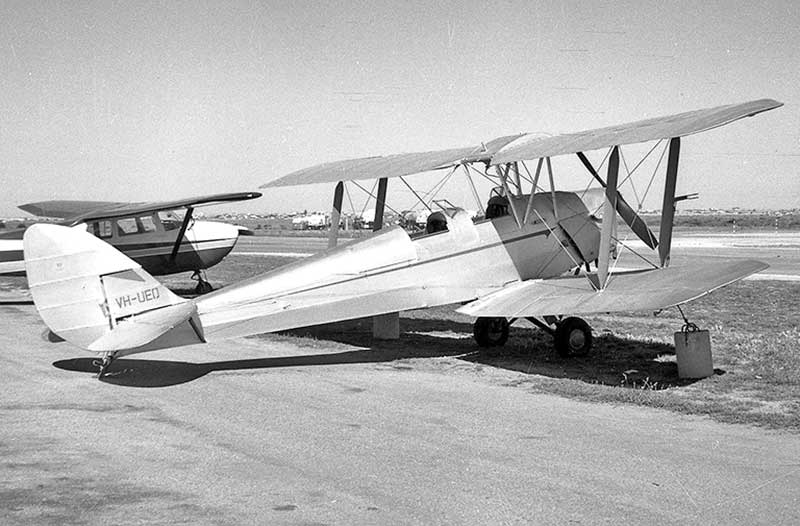
September 1962. VH-UEQ was registered quoting serial "FU78", which tormented DH.82 historians until the DH plate was
examined and revealed to be a badly punched former RAAF serial A17-78, built at Sydney in August 1940.
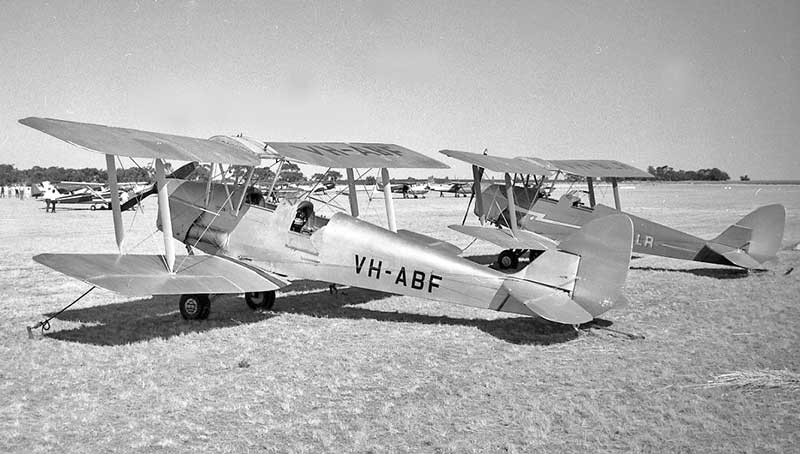
properties at nearby Kerang
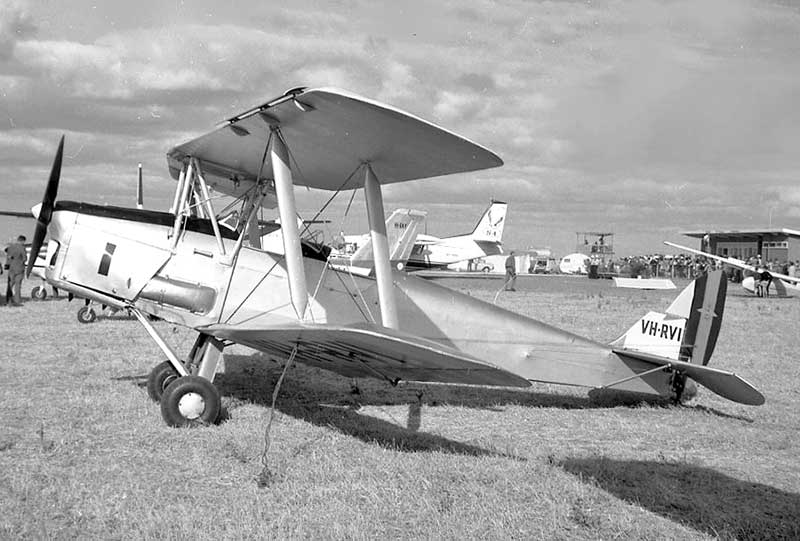
airshow at Horsham Victoria in March 1965.
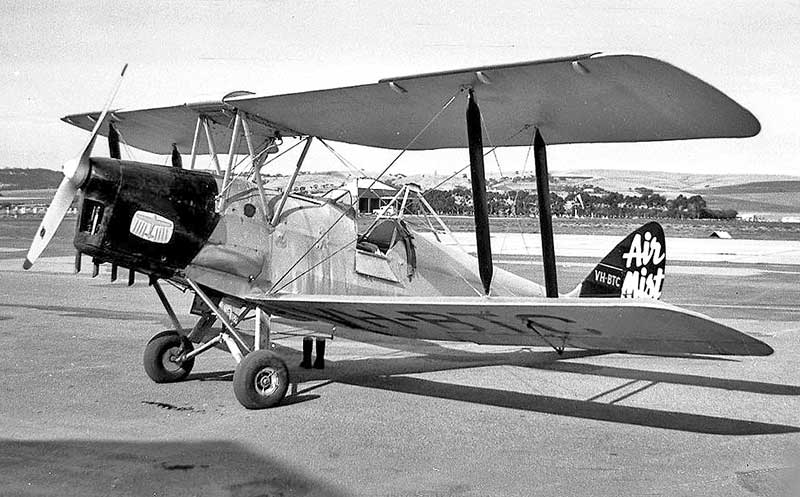
the high pilot fatality rate in DH.82 crop spraying and dusting accidents resulted in the requirement to fit an overturn truss to protect
the pilot's head. In 1961 DCA implemented a three-year plan to ban Tiger Moths from ag work: all Australian agricultural operators
were required to reduce their DH.82 fleets by a third each year.
Here's VH-BTC at Parafield SA in May 1962, outside the Air Mist hangar, after a crop dusting job.
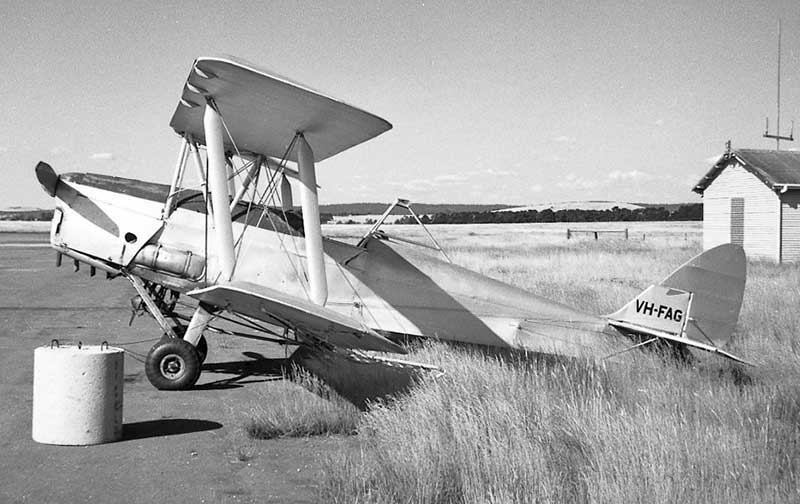
in the popular vintage and antique aircraft movement. Here Aerial Cropdusters and Sprayers Ltd of Melbourne's VH-FAG sits in the
weather at Ballarat Vic in February 1965. It is still fitted with its under wing spray bars and fan-driven pump under the fuselage.
The chemical hopper is fitted in the front cockpit position, with a refilling hatch ahead of the pilot's windscreen.
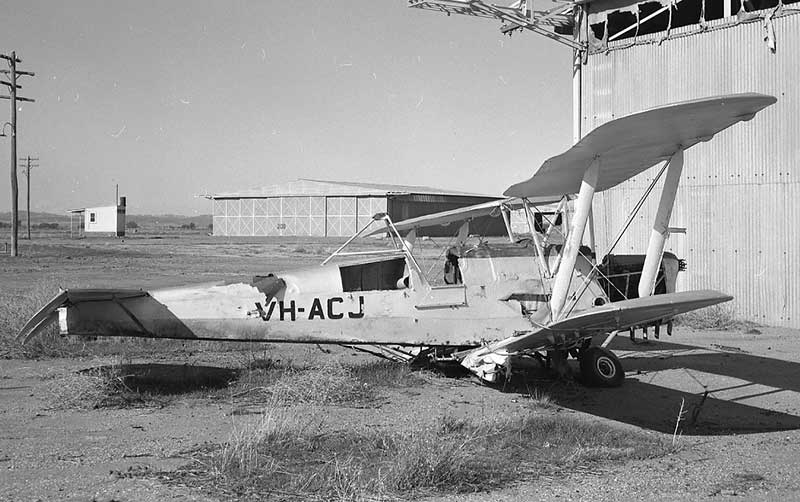
Melbourne was VH-ACJ left at the closed RAAF base at Uranquinty NSW. Photographed there in July 1967 after a windstorm
caused this damage, it languished there until saved and later rebuilt as a privately owned two-seater.
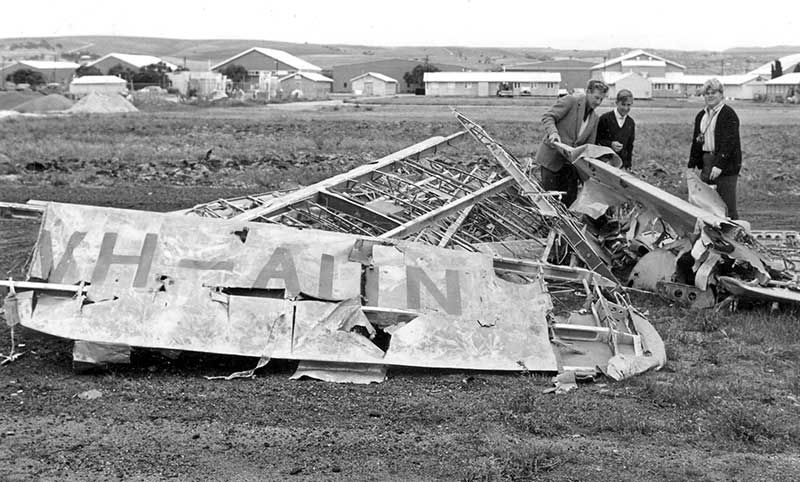
Parafield dumped damaged Tiger wings and airframe sections at the DCA Fire Service practice ground in 1966. Here the remains
are being inspected by John Smith, John Streeter and Geoff Goodall, although the better parts had already been removed by a
local enthusiast.
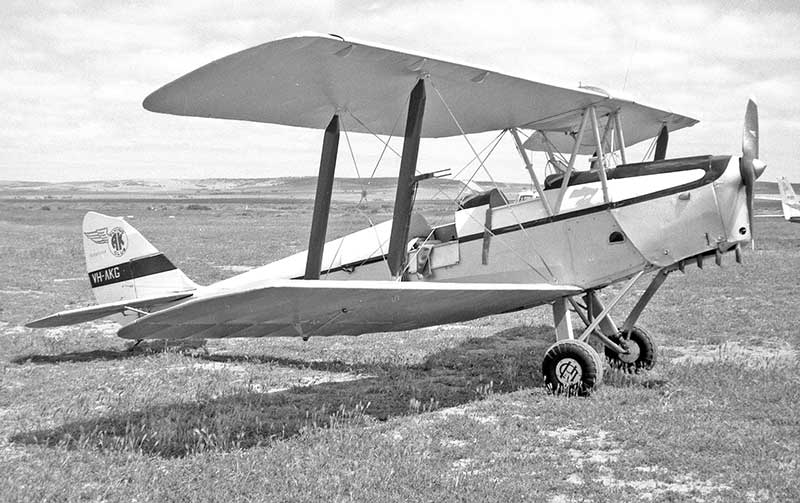
Aerial Spraying, Parafield. Operated initially by the Aerokair Flying Club, it is seen at Blythe SA in October 1964.

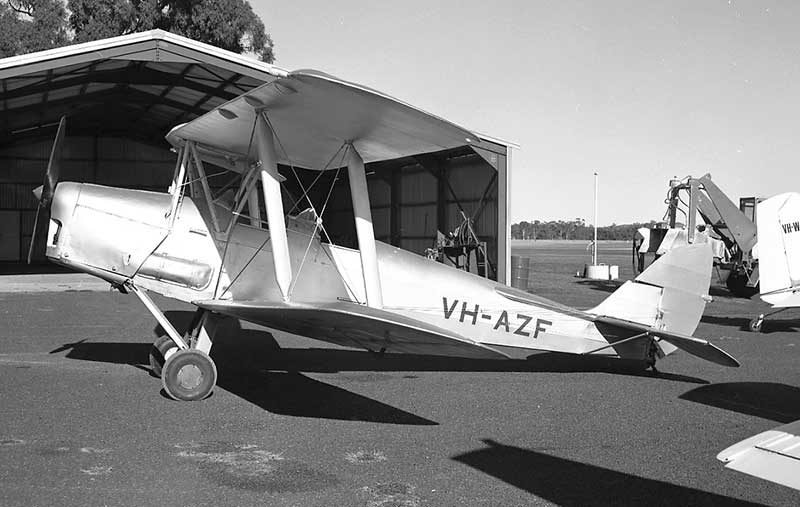
move out Duttons Aerial Sowing agricultural Cessna 180s to start their day's work.
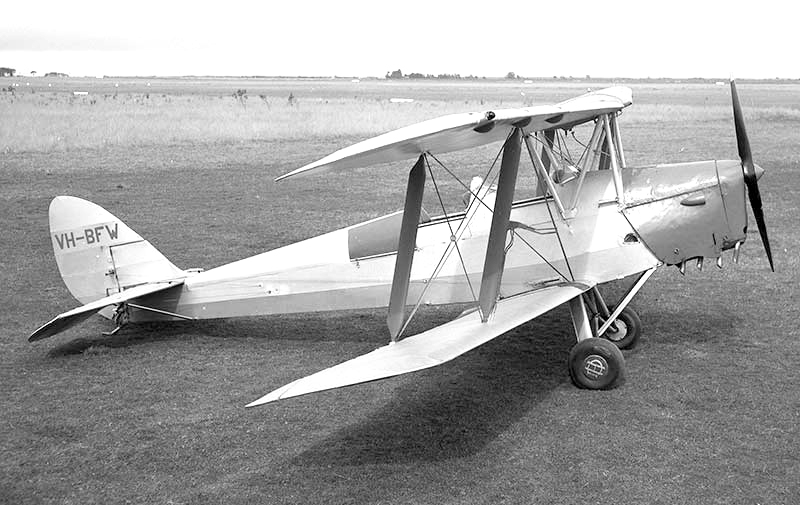
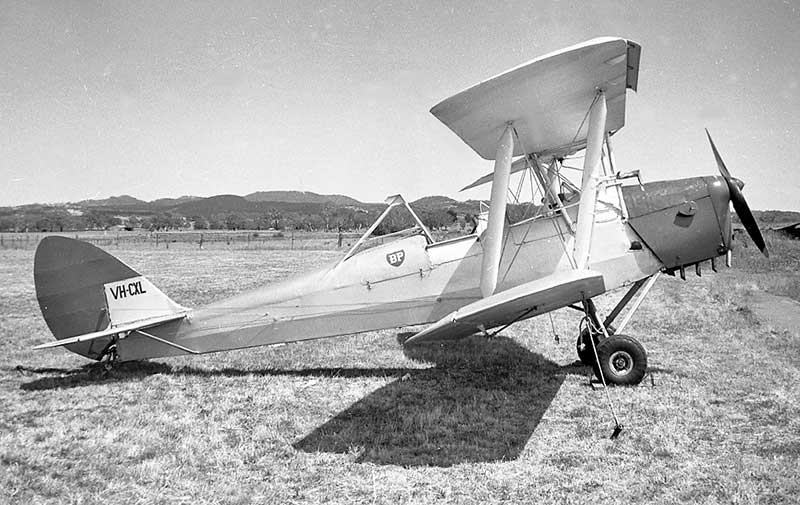
Camden NSW by Lawrence Engineering Services between 1959-1962. Now a privately-owned two seater, the overturn truss
behind the rear cockpit has been retained from its former cropspraying days with Deniliquin Aerial Services.

based on the canopy of the CAC CA-6 Wackett Trainer, and had no connection with the Canadian Tiger Moth canopy.
VH-AOU at Bathurst NSW in September 1965.
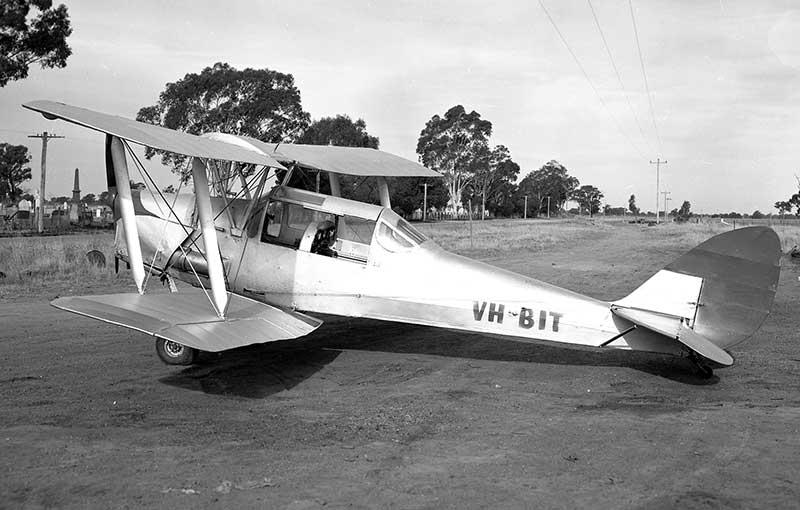
of Yarrawonga Vic to ask where he kept the aircraft - only to find it parked at his house! He had done some silver respraying on the
fuselage, and used an open block next door as an airstrip.
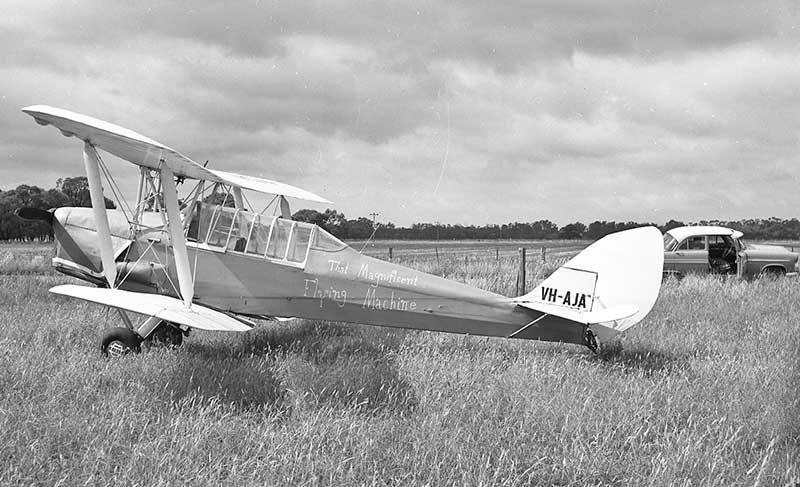
around and not tied down. The compiler's trusty Ford Zephyr on the road in the background.
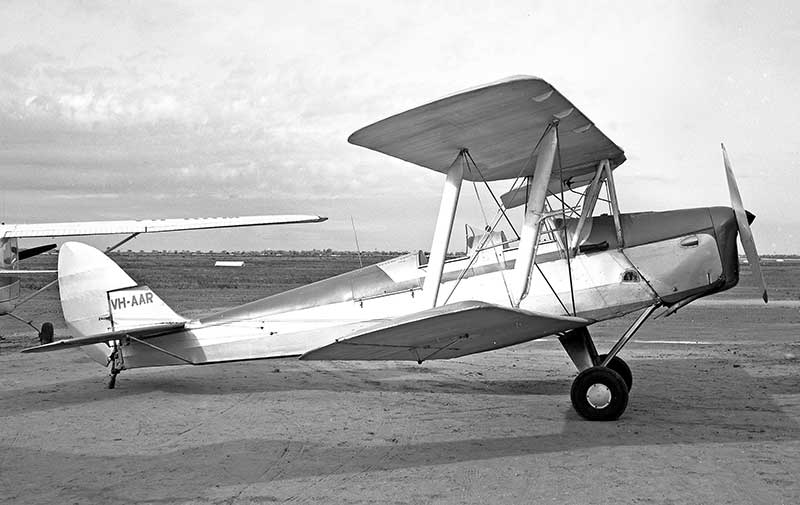
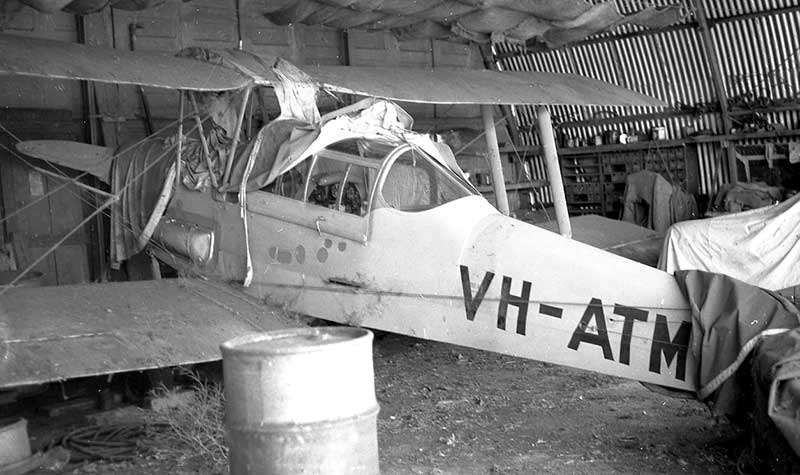
since 1946, but had never been seen by Adelaide enthusiasts. In April 1969 the property was visited, where the all yellow cabin
Tiger Moth was found in a barn, covered with canvas. Its owner had died but his family allowed us to remove the covering for this
picture. It had been parked here on flat tyres for at least twenty years. Some years later the aircraft was acquired by Richard Cavill,
Managing Director of SAATAS, restored to airworthy condition without the cabin and based at Parafield as his private aircraft.
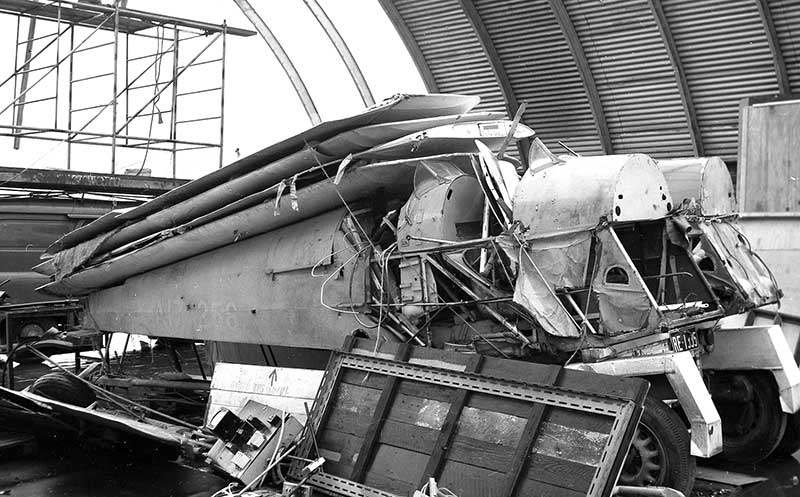
RAAF serials A17-258 and A17-284 are on a trailer, temporarily parked in an old igloo hangar which was being demolished at
the time. The pair had just been moved from Brisbane, where they had been stored for many years in the rafters of the Royal
Queensland Aero Club hangar at Archerfield and were the basis for future Tiger Moth restoration projects.